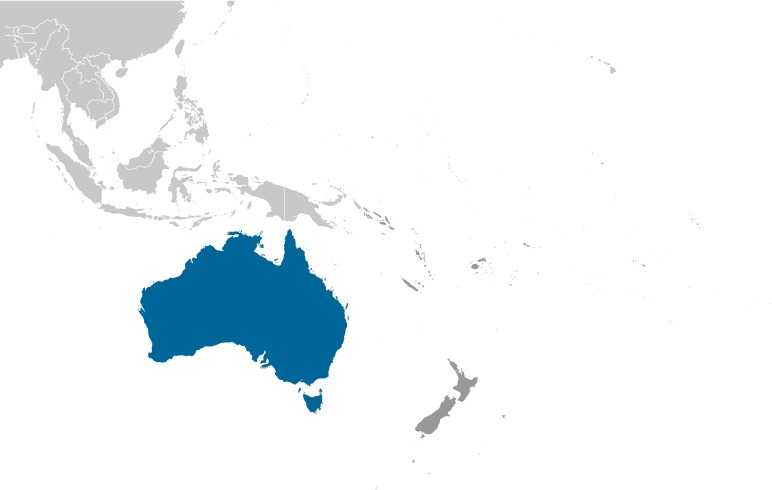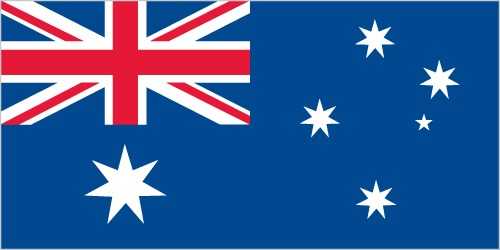Introduction
Background
Prehistoric settlers arrived on the continent from Southeast Asia at least 40,000 years before the first Europeans began exploration in the 17th century. All of Australia was claimed as British territory in 1829. Independence was achieved in 1901.
Geography
Area
total: 7,741,220 sq km
land: 7,682,300 sq km
water: 58,920 sq km
Climate
generally arid to semiarid; temperate in south and east; tropical in north
Natural resources
alumina, coal, iron ore, copper, lithium, tin, gold, silver, uranium, nickel, tungsten, rare earth elements, mineral sands, lead, zinc, diamonds, opals, natural gas, petroleum
People and Society
Population
total: 26,768,598
male: 13,305,110
female: 13,463,488 (2024 est.)
Ethnic groups
English 33%, Australian 29.9%, Irish 9.5%, Scottish 8.6%, Chinese 5.5%, Italian 4.4%, German 4%, Indian 3.1%, Australian Aboriginal 2.9%, Greek 1.7%, unspecified 4.7%
Languages
English 72%, Mandarin 2.7%, Arabic 1.4%, Vietnamese 1.3%, Cantonese 1.2%, other 15.7%, unspecified 5.7% (2021 est.)
Religions
Roman Catholic 20%, Protestant 18.1% (Anglican 9.8%, Uniting Church 2.6%, Presbyterian and Reformed 1.6%, Baptist 1.4%, Pentecostal 1%, other Protestant 1.7%), other Christian 3.5%, Muslim 3.2%, Hindu 2.7%, Buddhist 2.4%, Orthodox 2.3% (Eastern Orthodox 2.1%, Oriental Orthodox 0.2%), other 2.1%, none 38.4%, unspecified 7.3% (2021 est.)
Population growth rate
1.13% (2024 est.)
Government
Government type
federal parliamentary democracy under a constitutional monarchy; a Commonwealth realm
Capital
name: Canberra
Executive branch
chief of state: King CHARLES III (since 8 September 2022); represented by Governor General David HURLEY (since 1 July 2019)
head of government: Prime Minister Anthony ALBANESE (since 23 May 2022)
Legislative branch
description: bicameral Federal Parliament consists of:
Senate (76 seats; 12 members from each of the 6 states and 2 each from the 2 mainland territories; members directly elected in multi-seat constituencies by proportional representation vote; members serve 6-year terms with one-half of state membership renewed every 3 years and territory membership renewed every 3 years)
House of Representatives (151 seats; members directly elected in single-seat constituencies by majority preferential vote; members serve terms of up to 3 years)
Economy
Economic overview
highly developed, diversified, regionally and globally integrated economy; strong mining, manufacturing, and service sectors; net exporter driven by commodities to East Asian trade partners; “Future Made in Australia” program focused on green energy investments
Real GDP (purchasing power parity)
$1.329 trillion (2022 est.)
$1.274 trillion (2021 est.)
$1.248 trillion (2020 est.)
Real GDP per capita
$51,100 (2022 est.)
$49,600 (2021 est.)
$48,700 (2020 est.)
Agricultural products
wheat, sugarcane, barley, milk, rapeseed, cotton, sorghum, beef, oats, chicken (2022)
Industries
mining, industrial and transportation equipment, food processing, chemicals, steel
Exports
$464.925 billion (2022 est.)
$390.027 billion (2021 est.)
$300.81 billion (2020 est.)
Exports - partners
China 29%, Japan 19%, South Korea 10%, India 7%, Taiwan 6% (2022)
Exports - commodities
coal, iron ore, natural gas, gold, wheat (2022)
Imports
$367.458 billion (2022 est.)
$299.618 billion (2021 est.)
$251.779 billion (2020 est.)
Imports - partners
China 28%, US 10%, South Korea 6%, Japan 6%, Singapore 5% (2022)
Imports - commodities
refined petroleum, cars, garments, trucks, plastic products (2022)
Exchange rates
Australian dollars (AUD) per US dollar -
Exchange rates:
1.442 (2022 est.)
1.331 (2021 est.)
1.453 (2020 est.)
1.439 (2019 est.)
1.338 (2018 est.)
Page last updated: Tuesday, May 28, 2024




